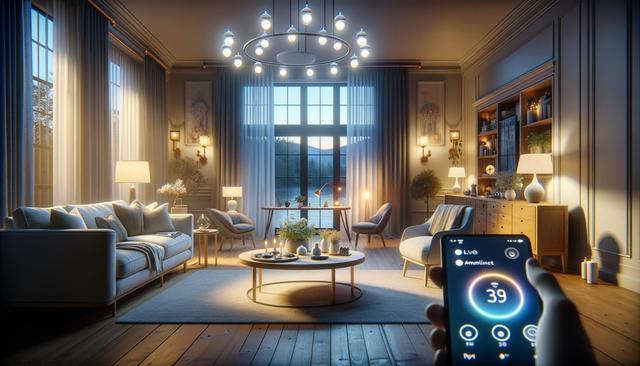Understanding Smart Lighting Systems
Smart home lighting control refers to the integration of lighting systems with connected technology that allows users to manage lighting through their smartphones, voice assistants, and automated schedules. These systems are designed to improve daily convenience while enhancing energy use and ambiance in residential spaces. At its core, smart lighting relies on a central hub or an app that communicates with bulbs, switches, or fixtures to enable remote or automated control. Some systems operate over Wi-Fi, while others use protocols like Zigbee or Z-Wave for enhanced reliability and connectivity.
Users can typically set up multiple lighting zones, customize brightness levels, and even change colors depending on the type of bulbs installed. This level of control helps optimize lighting for different times of day or activities, such as reading, relaxing, or cooking. The ability to control lighting remotely also adds a layer of security, allowing homeowners to simulate occupancy when away.
Benefits of Smart Home Lighting
Smart home lighting offers numerous advantages that go beyond simple on-off control. These benefits make it a compelling addition to any modern household. Some of the key advantages include:
- Energy efficiency: Smart lighting allows users to reduce power consumption by dimming lights or turning them off automatically when not needed.
- Convenience: Control lights from anywhere using a mobile app or voice commands, without the need to physically interact with switches.
- Customization: Create lighting scenes or schedules tailored to specific moods, times, or routines.
- Enhanced security: Automate lights to turn on at certain times or in response to motion sensors, deterring potential intruders.
These features not only improve the quality of life but can also contribute to lower utility bills and a reduced carbon footprint, especially when paired with energy-saving LED bulbs.
Popular Features and Functionalities
Smart lighting systems come with a wide range of functionalities that cater to varied user needs. One of the most appreciated features is voice control, which is compatible with many popular smart home ecosystems. Users can simply speak a command to dim the lights or turn off all lights in a room. In addition, geofencing technology allows lights to respond to the user’s location. For example, lights can automatically turn on when someone arrives home or turn off when they leave.
Another helpful feature is the ability to program lighting scenes. These scenes can combine several lights at different settings to create a specific atmosphere. For instance, a “movie night” scene might dim the living room lights and turn off the hallway lights. Some systems also allow integration with other smart devices, such as thermostats or blinds, for a more cohesive home automation experience.
Installation and Compatibility Considerations
Setting up a smart lighting system requires some planning, especially to ensure compatibility with existing home infrastructure. While many smart bulbs are designed to fit standard sockets and can be installed without professional help, more complex systems involving wired switches or hubs may require a technician. When choosing a smart lighting solution, it’s important to consider factors like:
- Compatibility with the home’s Wi-Fi or smart home hub
- Support for chosen mobile operating systems (iOS or Android)
- Integration with other smart devices already in use
- Availability of customer support and software updates
Wireless options are typically easier to install, but wired systems may offer greater reliability and lower latency. The choice depends largely on user preference and the specific needs of the household.
Smart Lighting for Sustainability and Accessibility
Beyond convenience, smart home lighting also supports sustainability goals and provides accessibility benefits. By automating lighting based on occupancy or natural light availability, these systems reduce unnecessary energy use. Many platforms also provide usage analytics, helping users understand and adjust their habits for better energy management.
For individuals with limited mobility or visual impairments, smart lighting can significantly enhance everyday life. Features like motion-activated lighting or voice commands eliminate the need to reach switches or navigate through dark rooms. Other accessibility-focused options include tactile-friendly switches and customizable control settings for varying needs.
Incorporating smart lighting into a home is more than a tech upgrade—it’s a step toward a more sustainable, inclusive, and adaptable living environment.
Conclusion: Embracing Smarter Living
Smart home lighting control offers a practical and innovative way to enhance the comfort, efficiency, and security of any living space. Whether you’re looking to reduce energy costs, simplify daily routines, or support the needs of a diverse household, these systems provide flexible solutions that can be tailored to individual preferences. As technology continues to evolve, investing in smart lighting can be a thoughtful move toward a more connected and responsive home.


